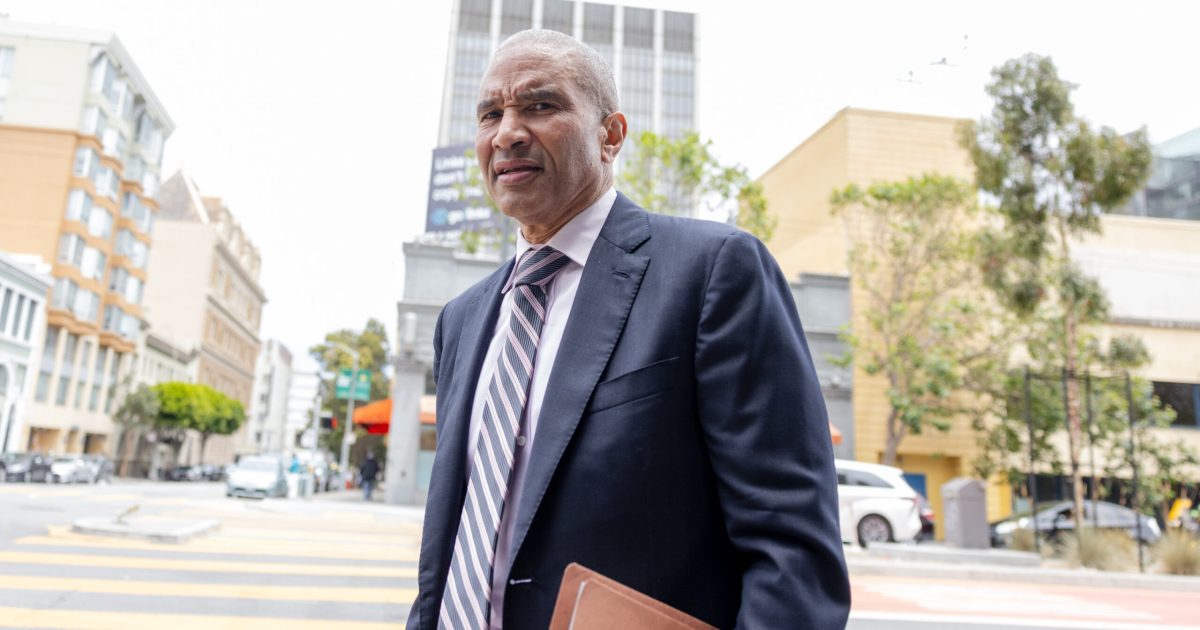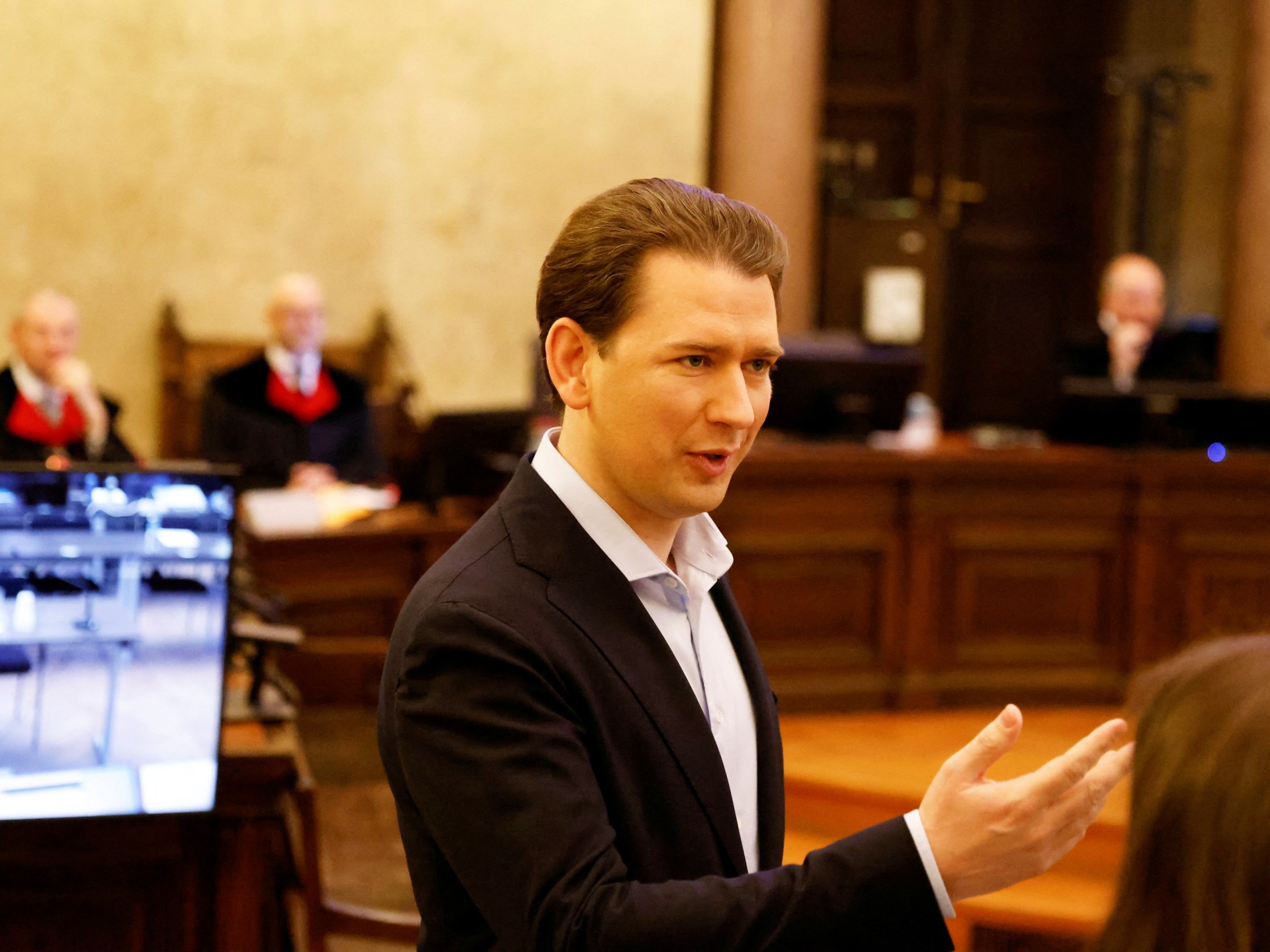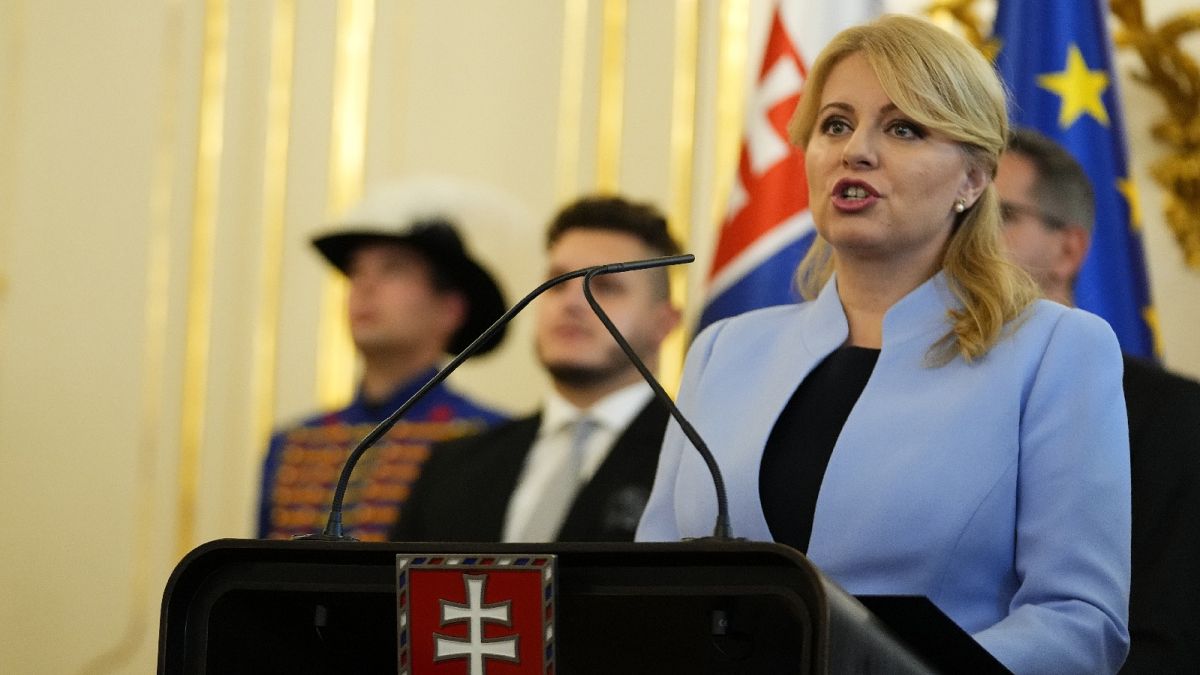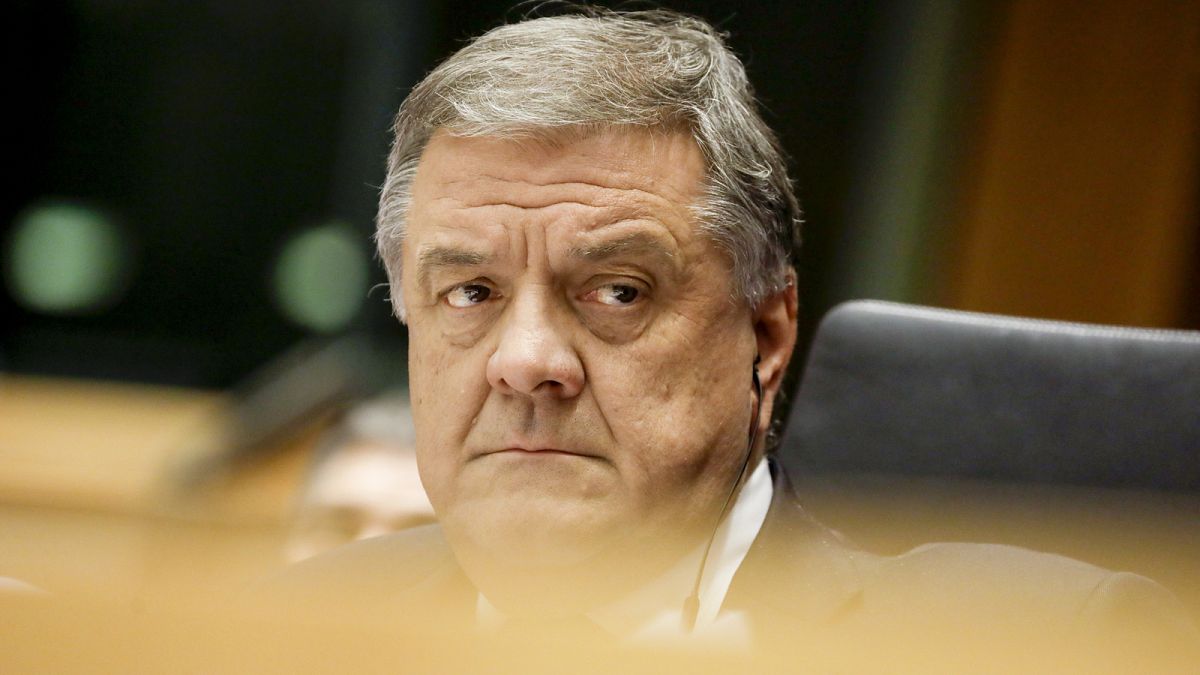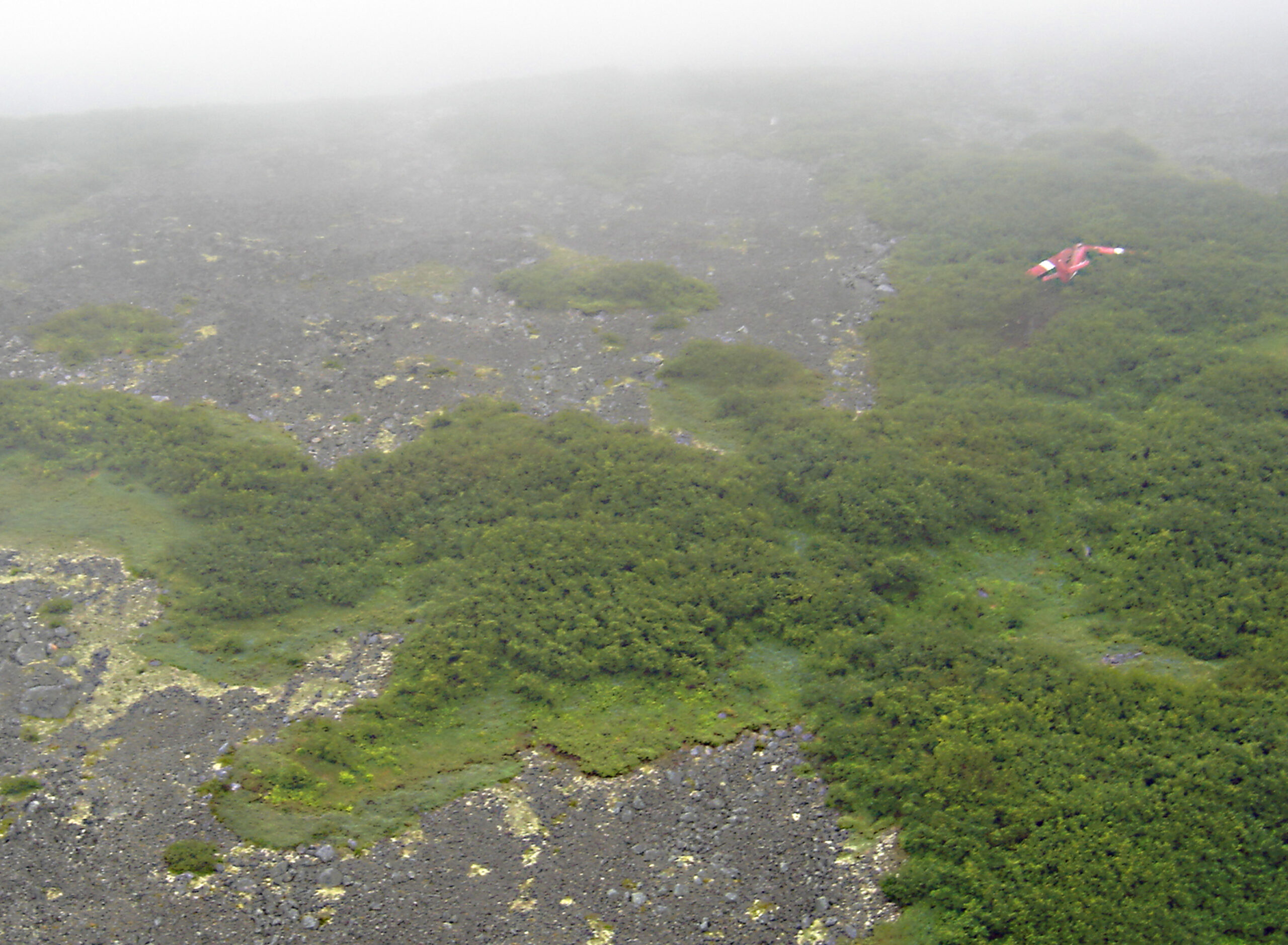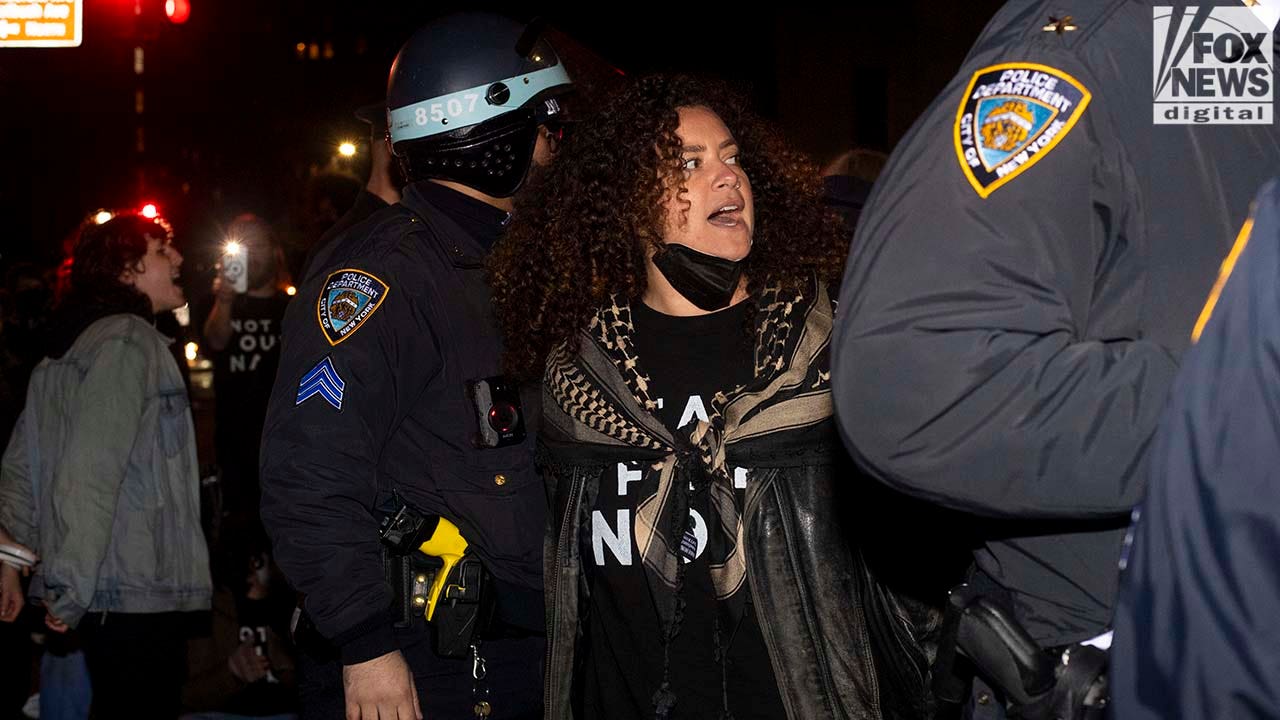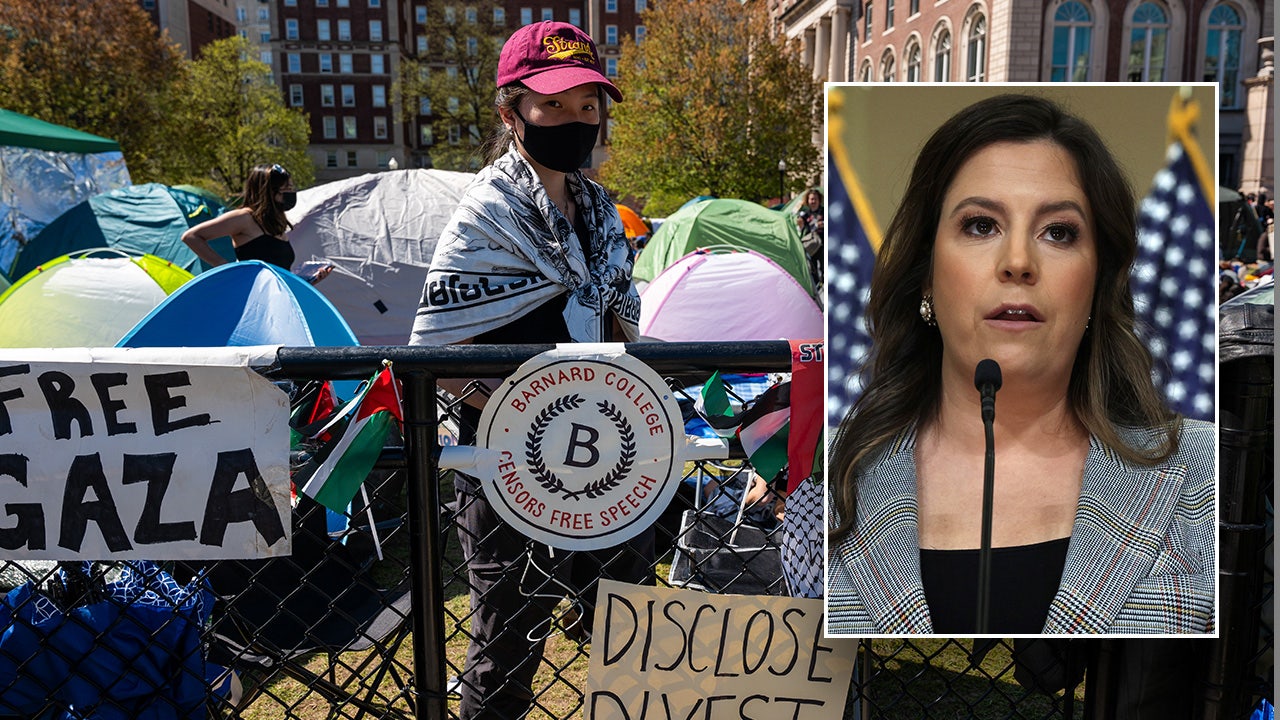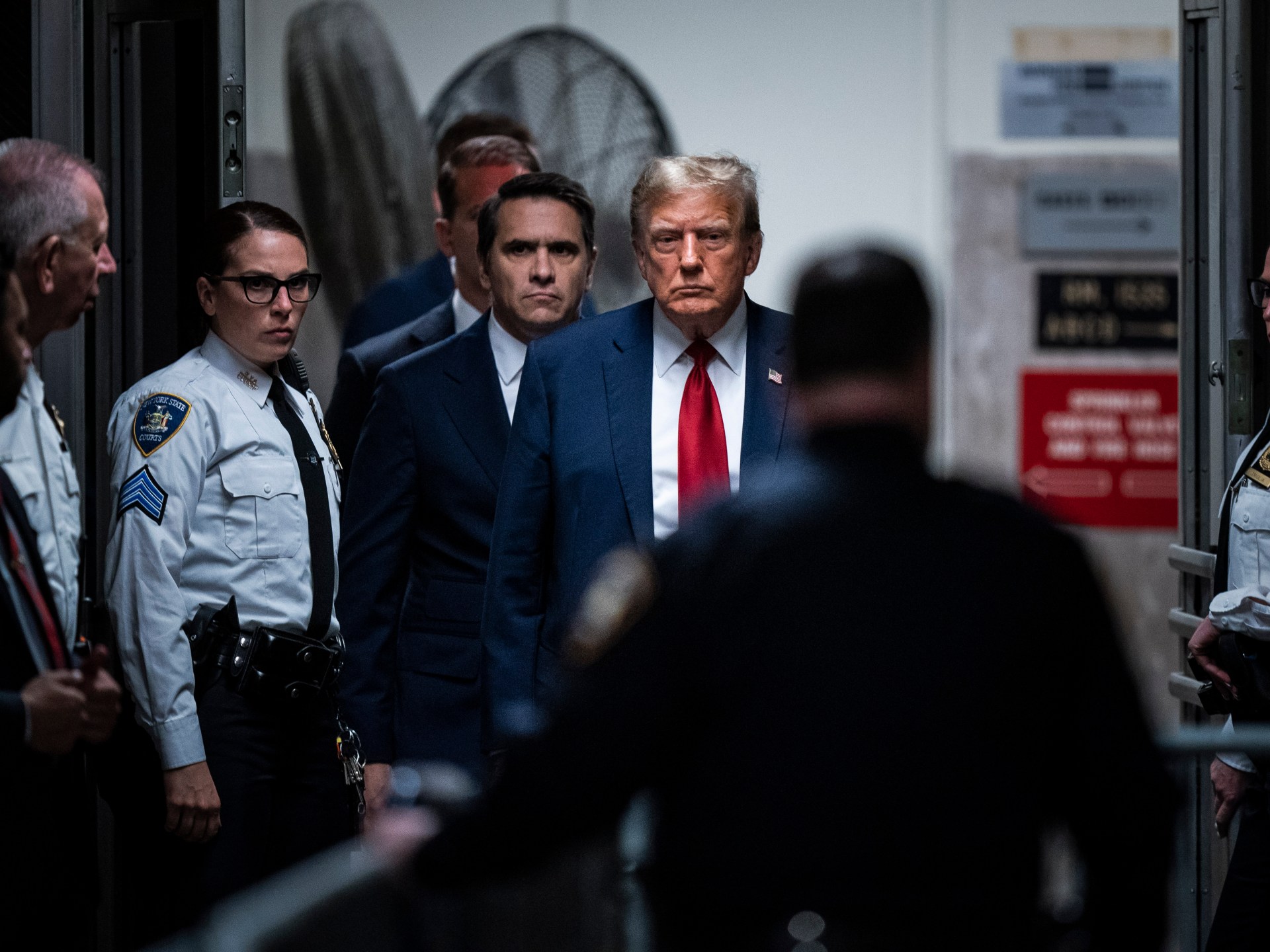World
MEP Eva Kaili denies role in European Parliament corruption scandal
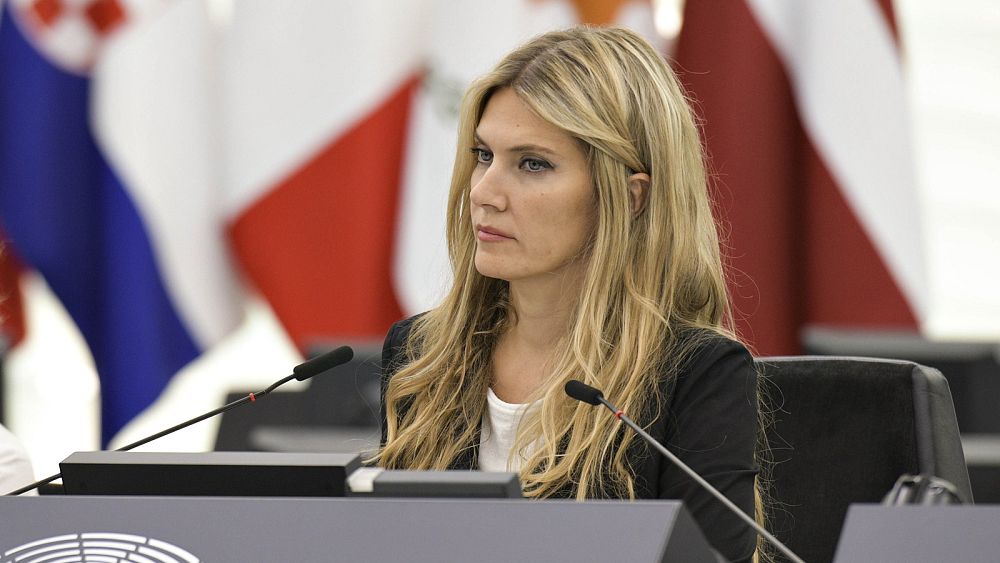
Eva Kaili, the former European Parliament vice president who was arrested in December, broke her silence with three interviews in European newspapers.
Eva Kaili, the MEP at the centre of the European Parliament corruption scandal, broke her silence over the weekend in three separate interviews with European newspapers, defending herself against the criminal charges she faces.
The former European Parliament vice president was arrested last December and charged with participation in a criminal organisation, corruption and money laundering.
The investigation centres on a cash-for-favours scheme that allegedly involved bribes paid by Qatar and Morocco to influence policy-making inside the European Parliament.
The probe has brought charges against six individuals in Belgium and Italy, including three sitting lawmakers, and raised serious questions of foreign interference and illicit lobbying.
But Kaili, the most high-profile of the suspects, insisted on her innocence in interviews published in the Spanish newspaper El Mundo, Italian newspaper Corriere della Sera and French newspaper Libération.
They were published after the MEP was released from electronic surveillance following four months in prison and nearly two months monitored at her home.
The interviews occurred before a court order that she not speak to the press, Libération reported.
‘I know I look guilty’
Kaili told the French newspaper that she indeed found hundreds of thousands of euros in the home she shared with partner Francesco Giorgi after his arrest last year.
She gave that cash to her father to bring back to his hotel, which was found by Belgian authorities. Police apprehended the father but he was later released without charges.
“I just wanted to get this money that didn’t belong to me out of my house. I can’t explain it differently. I know I look guilty,” she told Libération.
Kaili told Corriere della Sera that she was put in solitary confinement after her arrest, denouncing the conditions in Belgian prisons as “inhumane.”
She also defended her previous meetings with Gulf countries, stating that as a parliament vice president in charge of relations with the Middle East, she often met ambassadors and ministers and planned official visits.
Weeks before her arrest, the lawmaker delivered a speech before the hemicycle in which she strongly defended Qatar’s track record on human rights in the context of the 2022 FIFA World Cup.
She told El Mundo that she would be delighted if “someone could explain to me how what I have said differs from European politics.”
Kaili claimed that Belgian secret services monitored her due to her work on the parliament’s committee investigating the use of Pegasus spyware in Europe, claiming that this was the “real scandal.”
She also accused Belgian authorities of trying to force her to name people in the case in exchange for a deal, stating that if she had pleaded guilty she could have gone back to her daughter.
Her lawyer, Sven Mary, told Euronews earlier this year that the Belgian authorities had not found any new evidence to justify Kaili’s imprisonment. Shortly after, she was released from prison with electronic surveillance.
Last month, the MEP was no longer required to wear an electronic bracelet.
The Belgian Federal Prosecutor’s office told Euronews that they would not react to Kaili’s comments but specified that the matter would be decided by the justice system.
A spokesperson added that Kaili had been allowed to see her daughter twice a month, which he said is the standard in preventive detention.

World
Ukraine’s Race to Hold the Line

Source: Satellite imagery from Copernicus
This defensive line in southern Ukraine runs a staggering 27 miles. Two months ago, it didn’t exist.
Russia built something very similar in late 2022 to repel a Ukrainian counteroffensive. But now the tables have turned.
Ditches. Concrete obstacles to funnel enemy tanks into positions where they can be more easily attacked. Trenches for soldiers to fire from.
It all adds up to the Ukrainians’ grim new reality: Russia appears ready to keep advancing despite suffering heavy casualties, and all they can do is try to slow it down.
After the failure of a much-heralded counteroffensive and another winter of fending off Russian attacks, Ukrainian troops are exhausted and facing severe shortages.
The government has signed off on a conscription plan to replenish the ranks, and European countries have promised to send more vehicles and missiles, among other critically needed supplies. Ukraine received a much-needed boost on Saturday, when the U.S. House of Representatives approved a $60 billion military assistance package that will provide more weapons to their war effort.
But what Ukraine really needs is time.
Training those new troops will take months, and the European equipment will arrive gradually, over the course of the year.
Analysts believe that Ukraine is unlikely to start a major counteroffensive this year, choosing instead to spend the time reconstituting its forces. But it will still need to try to stave off Russian attacks and to keep any small enemy gains from becoming full-fledged breakthroughs.
That is where the ambitious defensive lines that are frantically being built come in.
These ditches are usually at least 10 feet wide, so tanks cannot cross them.
Reuters/Vyacheslav Madiyevskyy Rows of concrete obstacles block vehicles from advancing across open fields.
Reuters
A new reinforced trench in Zaporizhzhia provides cover for the infantry. Reuters
The Ukrainian government has allocated about $800 million to building fortifications along about 600 miles of front line this year, and construction is well underway.
The defenses shown above are just a small part of what Ukraine has been putting in place, much of which can be seen in publicly available satellite imagery from Copernicus, part of the European Union’s space program.
American military analysts in Wiesbaden, Germany, drawing on satellite imagery and other intelligence, have been working closely with Ukrainian liaison officers to identify gaps in Ukraine’s defenses, officials say.
Since the start of the year, Ukraine has built long defensive lines across two regions in the south, Kherson and Zaporizhzhia.
Source: Territory held by Russia based on data from the Institute for the Study of War with American Enterprise Institute’s Critical Threats Project
Note: Based on analysis of satellite imagery. The defensive lines only include larger fortifications, such as long anti-tank ditches, and do not include smaller defenses like infantry trenches.
As well as the new defenses in the south, Pentagon officials and independent analysts also pointed to ones beyond Avdiivka in the east.
The Ukrainian military is eager to prevent a repeat of what happened around Avdiivka in February, after that city was captured by the Russians. Meager Ukrainian defenses allowed the enemy to keep pushing west.
So far, four officials said in interviews, the results have been mixed. A robust, multilayer tiered defense is still weeks away, if not months, they said.
But the top U.S. commander in Europe, Gen. Christopher G. Cavoli, expressed optimism.
“I think that their defenses are going to be very strong, and are strong,” General Cavoli said in a brief interview. “And with continued support, they’re going to be in a good position.”
But on the ground, it has not been easy.
On the outskirts of one embattled town, Chasiv Yar, exhausted troops are holding onto terrain around a canal. But their defenses are poorly constructed and should have been fortified with concrete months ago, a Ukrainian commander said.
Now the Russians are close to fighting street to street.
The defenses going up in eastern Ukraine are markedly different from many of those in the south. In place of broad defensive lines are installations meant to fortify urban areas that are in Russia’s sights.
One of them is Kurakhove.
The city lies on a main road 10 miles northeast of Marinka, which Russia began trying to capture in 2014, when it was making incursions into Ukrainian territory.
Marinka finally fell late last year. Satellite imagery now shows Ukraine working to protect Kurakhove.
Source: Satellite imagery from Copernicus
Defenses built around Kurakhove this year
This effort indicates that the Ukrainians are directing their resources to the most defensible terrain, with the idea of making ground advances as costly as possible for Russia.
The defenses also point to a strategy across much of the front line that involves keeping Russian forces off guard with small attacks and seeking to exploit flaws in their defenses, officials said.
For now, with minefields and fortifications making it difficult to attack and maneuver without big losses, both sides are relying heavily on well-prepared entrenchments.
These can include deep trenches fortified with cement, overhead protection, heating and sleeping areas. They require extensive manpower to build and to defend. With Ukraine’s ranks thinned by casualties, it remains unclear if it is up to the task.
James Rands, a military analyst with Janes, a defense intelligence company in London, said the defenses Ukraine built during earlier conflicts with Russia were exceptional. In Donbas, he said, the bunkers were dry and protected with overhead cover, fire-proofing and ballistic protection. The trenches were reinforced.
With Russia now mounting a full invasion, Ukraine is unlikely to be able to do that again, Mr. Rands said.
“The positions they have fallen back to are not in the same league by any stretch of the imagination,” he said. “Ukraine now needs to build a series of defensive positions whilst in contact — which is difficult.”
Methodology
We detected newly built fortifications in Ukrainian-held territory by comparing satellite imagery taken between December 2023 and April 2024. All of the satellite imagery used for the analysis was publicly available Sentinel-2 imagery from Copernicus, part of the European Union Space Agency.
World
EU unable to determine impact of refugee funds given to Turkey, auditors say
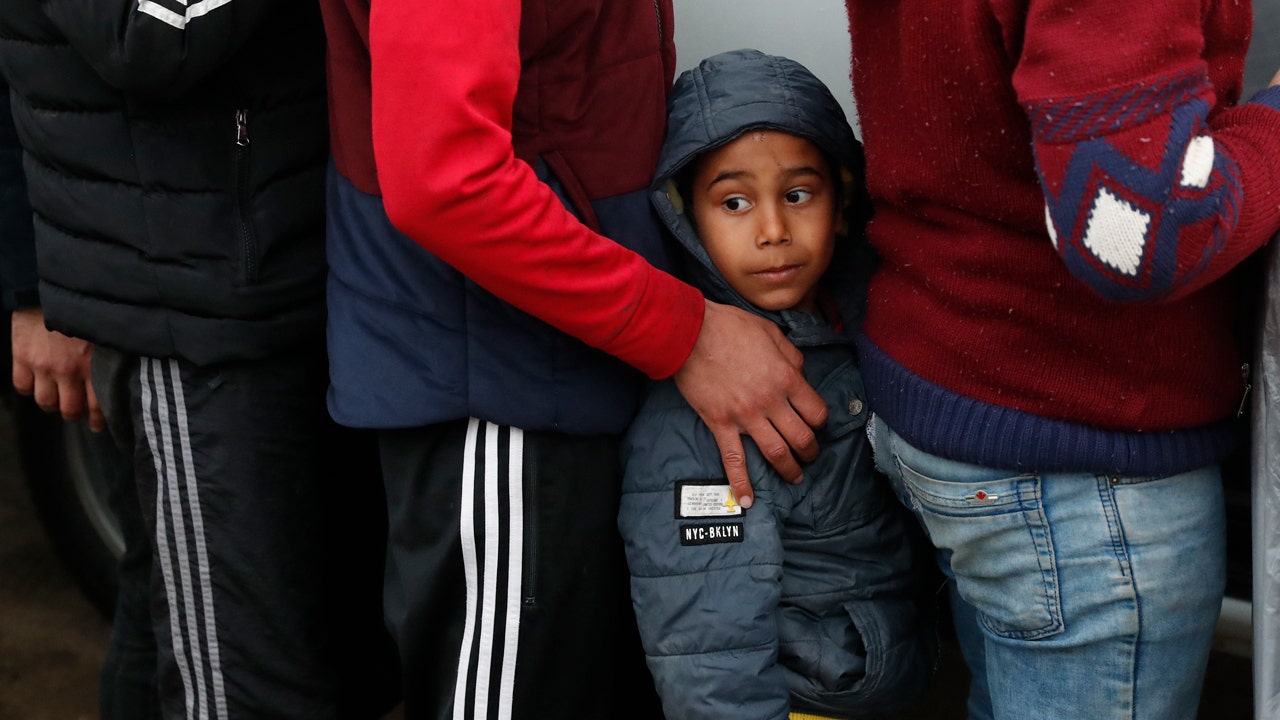
European Union auditors said on Wednesday that they are unable to establish whether some of the billions of euros the bloc has given to Turkey to help it cope with Syrian refugees is actually having any impact.
Under a deal concluded between EU leaders and Turkey in 2016, the bloc committed to provide at least $6.4 billion to Turkey to help it cope with migrants crossing in from Syria. Turkey in turn committed to stop migrants leaving its territory for Europe.
16 DEAD, INCLUDING 4 CHILDREN, AFTER MIGRANT BOAT SINKS OFF THE COAST OF TURKEY
In March 2016, a month after the deal came into effect, Turkey’s government said the number of migrants crossing illegally into Greece had dropped from around 6,000 per day in November 2015 to about 130 daily.
In 2021, the leaders announced plans to send a further $3.2 billion for refugees in Turkey. The pact, which was hailed in Europe as a great success, served as a template for other more recent and elaborate deals with Tunisia and Egypt.
Migrants wait in line for a distribution of blankets close to the Turkish-Greek border near Pazarkule, Edirne region, Turkey, Tuesday, March 10, 2020. European Union auditors said on Wednesday, April 24, 2024, they are unable to establish whether some of the billions of euros the bloc has given to Turkey to help it cope with Syrian refugees is actually having any impact. EU leaders and Turkey in 2016, committed to provide at least $6.4 billion to Turkey to help it cope with migrants crossing in from Syria. (AP Photo/Darko Bandic)
Money from the agreement is used to supply cash cards to some of the more than 4 million registered refugees, as well as to improve education and health, help people to better integrate and to build facilities in Turkey that people fleeing the war in Syria might need.
But the European Court of Auditors, or ECA, in a follow-up last year on whether the money was being used effectively, said that Turkey’s education ministry had refused to provide information that might allow them to assess what impact EU projects are having.
“I’m quite sure that European citizens would like to see some results coming out of the various development and humanitarian projects that the EU is funding,” ECA member Bettina Jakobsen told reporters.
According to the European Commission, the bloc’s executive branch, at least $566 million was destined to “support quality inclusive education of refugees in Turkey.” It’s meant to pay teacher salaries and provide education equipment, Turkish language and teacher training, as well as counselling and other guidance.
Auditors sought a list of the schools receiving EU support and the number of refugee pupils who are attending, as well as information on whether children who were not in education had been reintegrated into the school system and their exam pass rates, compared to Turkish students.
Without the data, Jakobsen underlined, “we are not able to conclude on measuring impact or sustainability” of the education projects underwritten by the EU.
Asked by The Associated Press what was preventing the auditors from getting the information from the education ministry, one EU auditor involved in the process said: “They just claimed that they didn’t have the data.”
“We do know that data should normally exist,” said the auditor, who under ECA regulations could not be named. “It’s not up to us to guess why or why not they don’t want to provide the data.”
An ECA official noted that it is relatively rare for authorities to fail to cooperate with auditors.
The auditors and officials from the commission, which is responsible for ensuring that the bloc’s money is correctly spent, made joint and individual requests for the information, but without success.
The auditors were able to visit some schools, as well as hospitals, which benefit from EU funds and could see that the facilities were used by refugees and Turkish pupils and that teachers were working there.
In general, given the challenges of the coronavirus pandemic, a major earthquake that struck Turkey and Syria in February 2023, and Turkey’s rampant inflation, the auditors found that the EU funding package “provided relevant support to refugees and host communities” in Turkey.
But Jakobsen also noted that auditors “found weaknesses in the commission’s assessment of project budgets” and said the EU’s executive branch “did not systematically assess whether project costs were reasonable or compare similar costs between different projects.”
World
Commission carries out first raid under foreign subsidies regulation
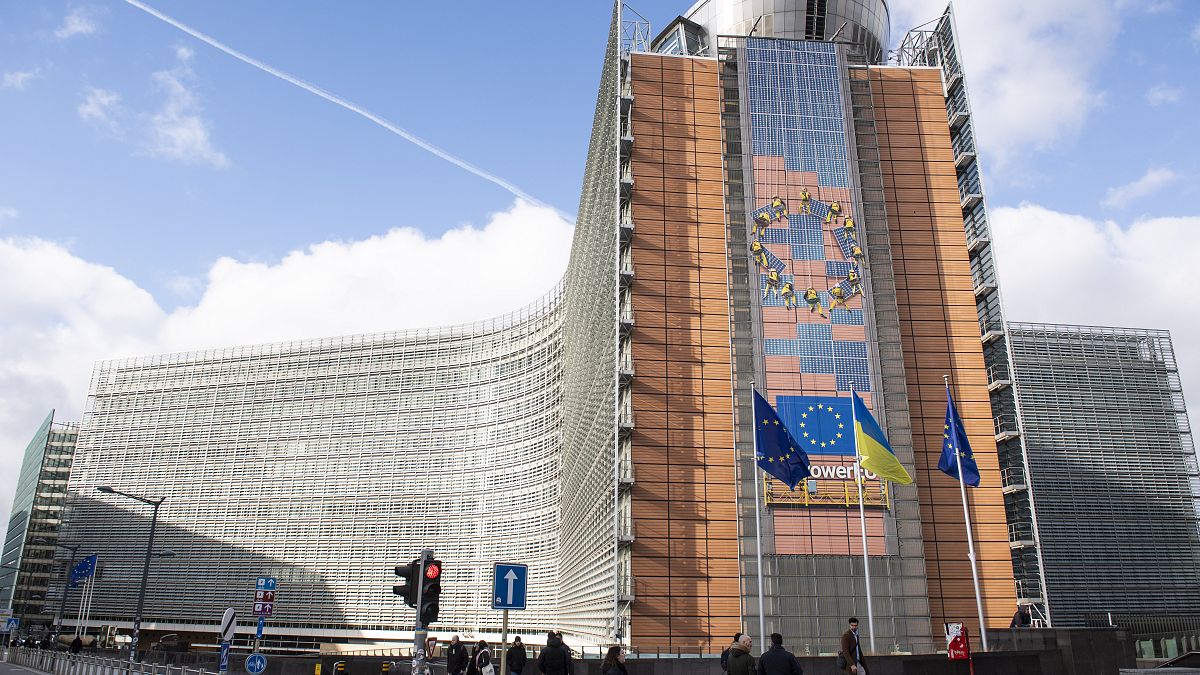
The EU Executive has used new powers for the first time against an unnamed security equipment company.
The European Commission on Tuesday carried out unannounced inspections at a company in the security equipment sector, the first to be done under the Foreign Subsidies Regulation.
The new rules, which applied since July 2023, aim to tackle distortions caused by foreign subsidies and ensure a level playing field for all companies operating in the EU market.
So far, the Commission has opened several investigations under the regulation, including into Chinese solar panel manufacturers and wind turbine producers, but this is the first time it has acknowledged raiding premises.
“The Commission has indications that the inspected company may have received foreign subsidies that could distort the internal market under the Foreign Subsidies Regulation,” the EU institution said in a statement.
Commission officials, together with their national counterparts, have raided the company’s premises in various member states, but as the investigation is at a preliminary stage, they are not naming the company, or the countries involved.
At this stage, it is not possible to say if this raid is a result of a complaint, a Commission spokesperson told Euronews. The EU executive has the power to instigate probes of its own volition too.
And there is no fixed deadline for gathering evidence and information to assess whether the company has received distorting foreign subsidies.
If sufficient evidence is discovered, the Commission will open an in-depth investigation. If not, the name and the member states involved would then be revealed.
“The fact that the Commission carries out such inspections does not mean that the company in question has indeed received distortive foreign subsidies, nor does it prejudge the outcome of the investigation,” the statement said.
-

 Politics1 week ago
Politics1 week agoNine questions about the Trump trial, answered
-

 World6 days ago
World6 days agoIf not Ursula, then who? Seven in the wings for Commission top job
-

 World1 week ago
World1 week agoHungary won't rule out using veto during EU Council presidency
-

 Movie Reviews1 week ago
Movie Reviews1 week agoFilm Review: Season of Terror (1969) by Koji Wakamatsu
-

 World1 week ago
World1 week agoCroatians vote in election pitting the PM against the country’s president
-
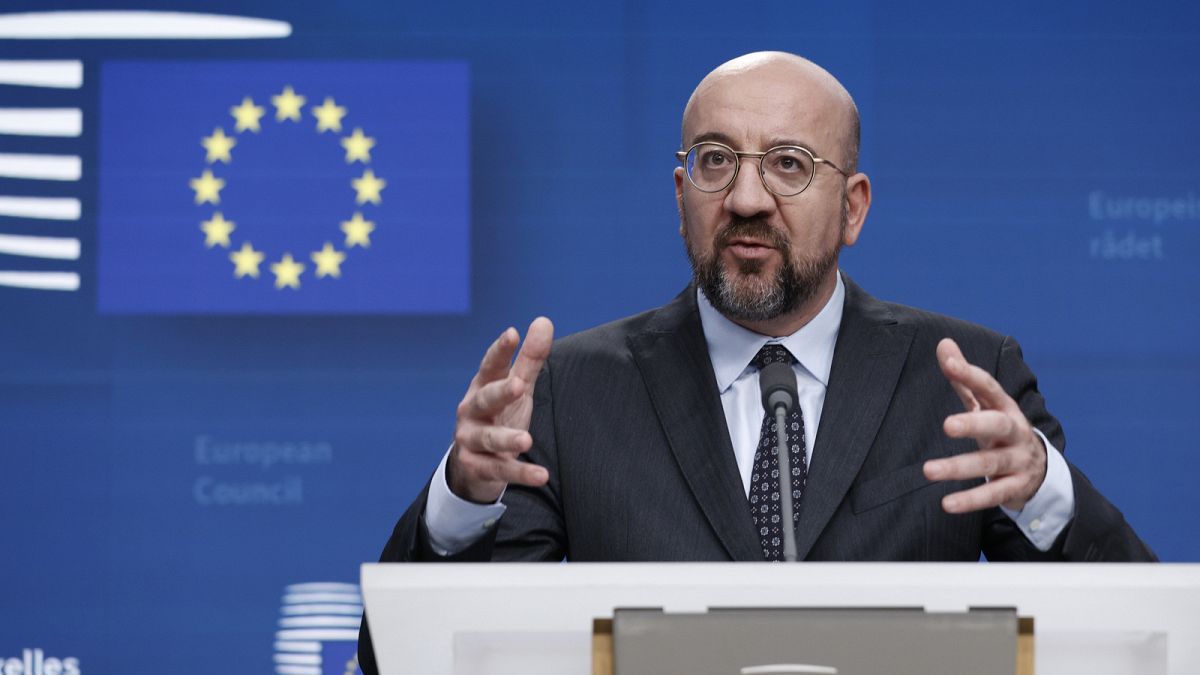
 World1 week ago
World1 week agoGroup of EU states should recognise Palestine together, Michel says
-

 Politics6 days ago
Politics6 days agoTrump trial: Jury selection to resume in New York City for 3rd day in former president's trial
-

 World1 week ago
World1 week agoThe Take: How Iran’s attack on Israel unfolded
